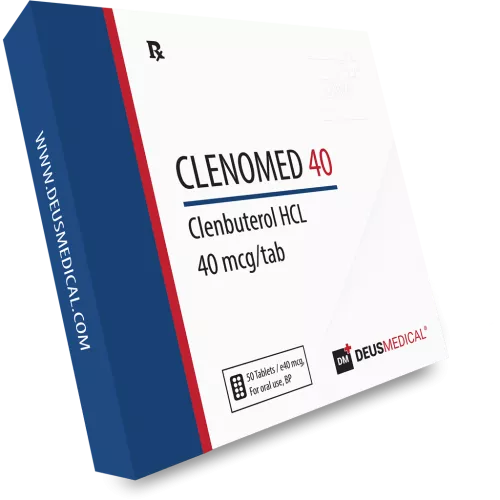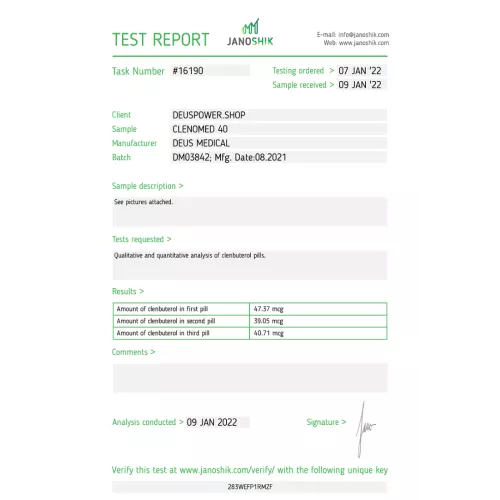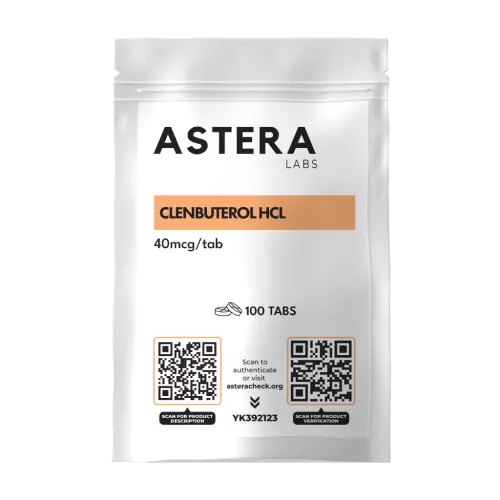
1. WHAT IS CLENBUTEROL?
Clenbuterol is a B2 adrenoceptor agonist that was prescribed some years ago as a treatment for bronchial asthma, although it was not approved in certain countries. It was first marketed in 1977 but was withdrawn from the market due to its potential long-term effects on cardiac tissue.
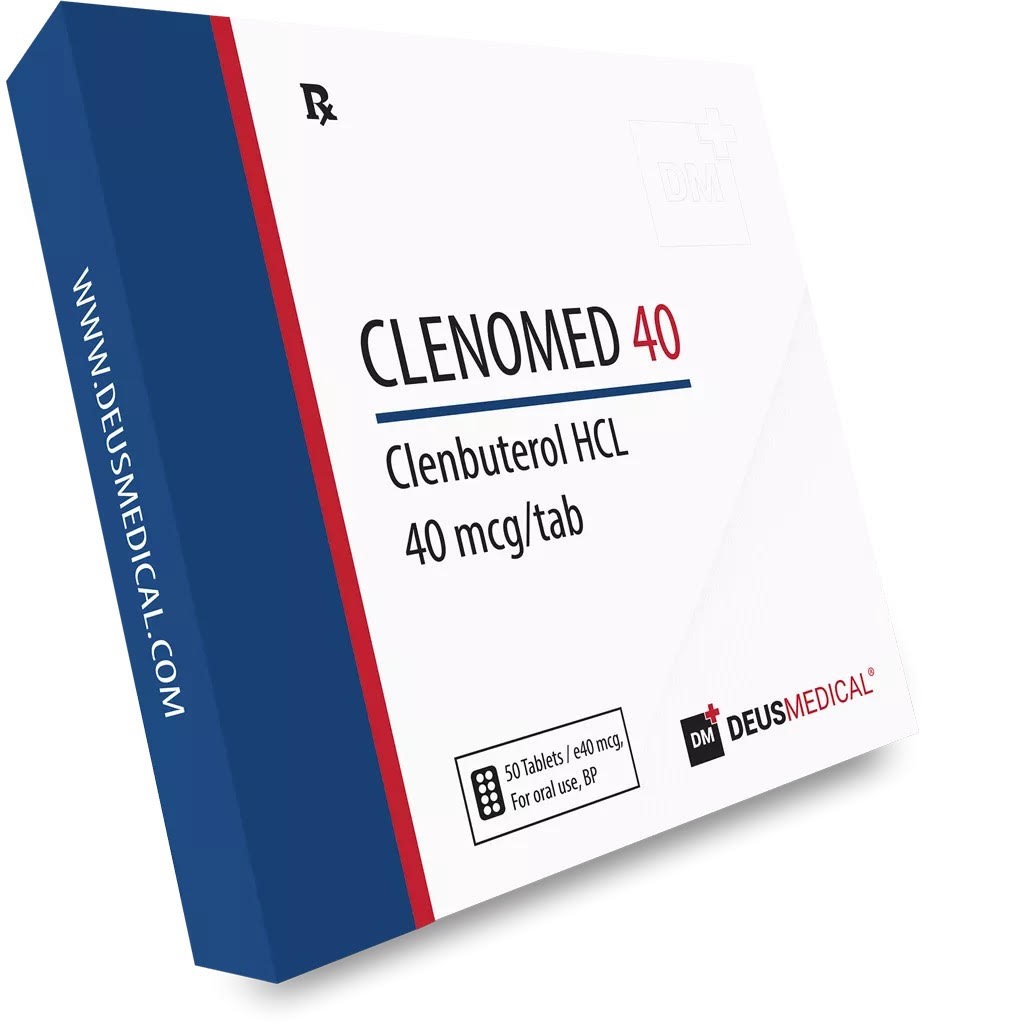
Clenbuterol is one of the most widely used drugs as a doping agent due to its lipolytic effect and performance enhancement. It is listed by WADA (World Anti-Doping Agency) under the category of B2 agonists. This drug can be detected through urine tests, where the presence of more than 5 ng/ml is considered abnormal.
2. MECHANISM OF ACTION
Clenbuterol is a Beta Agonist, meaning it is a ligand (substance) that activates a receptor, in this case, the B2 adrenergic receptors. These receptors respond to adrenaline and noradrenaline, for example, during physical exercise or stress, but in this case, they are activated by a sympathomimetic, clenbuterol.

B2 receptors are present in many cells of the body, primarily in fat tissue, adipocytes, and skeletal muscle. The activation of these receptors triggers a series of physiological effects, such as increase of catecholamines, increased blood pressure, increased cardiac output, and energy expenditure. These effects depend on the genotype and distribution of B receptors, which are individual, so each response is unique.
3. EFFECTS ON FAT LOSS
If we consider fat loss in a broad sense, the direct effects include lipolysis (the release and mobilization of fatty acids) and beta-oxidation (the use and/or burning of these fatty acids). However, these processes cannot occur without an energy deficit, regardless of the source, and clenbuterol also has a significant effect on the basal metabolic rate (BMR).
BMR refers to the energy expenditure at rest, which is increased by approximately 21% with the consumption of 80 micrograms of clenbuterol, and this effect becomes more noticeable with higher doses. However, tolerance is very individual and also depends on other factors such as genetic variability. Variations in basal metabolic rate can range from 200 to 1,000 kcal in highly tolerant individuals.
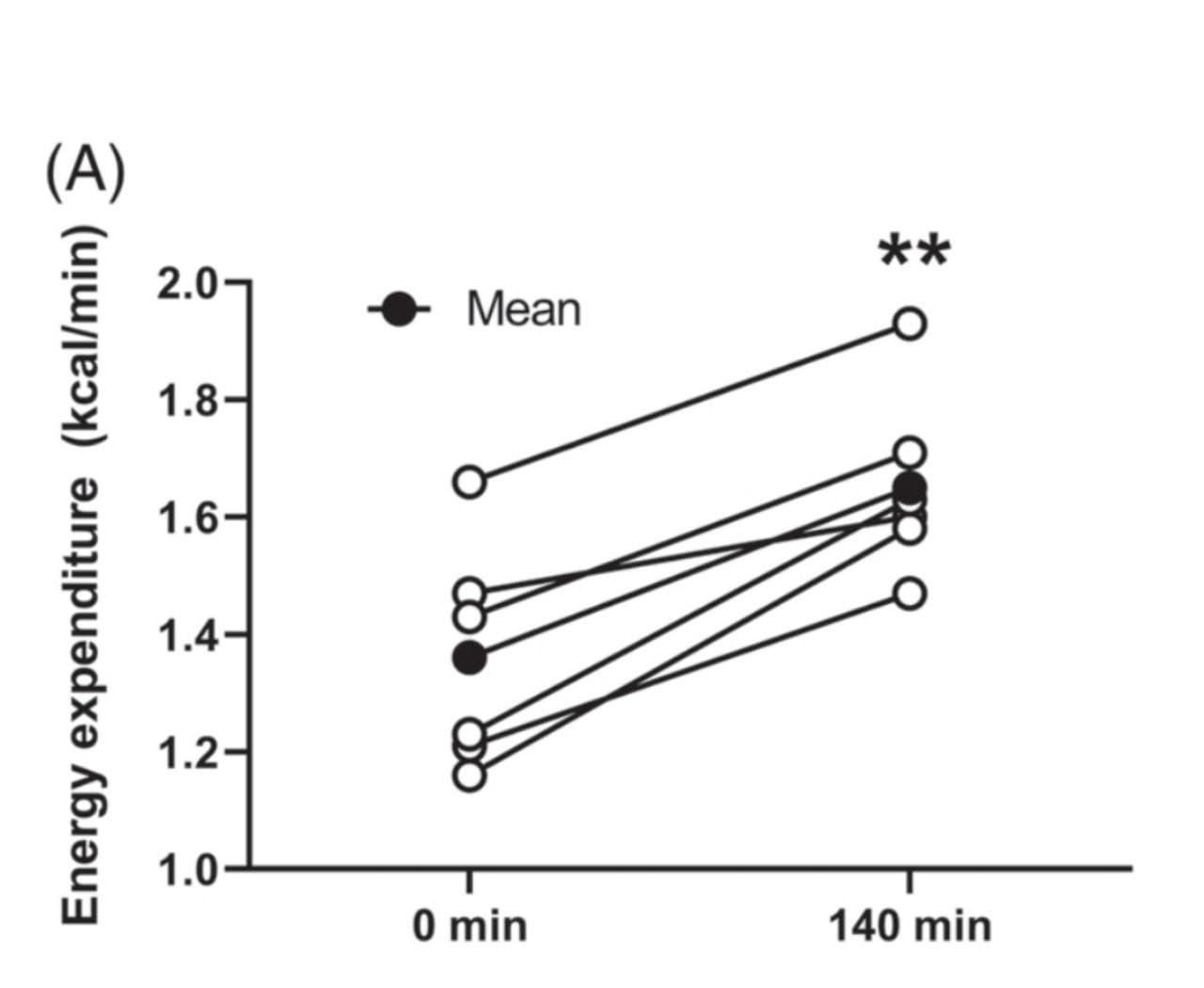
One of the basic mechanisms for optimizing fat loss with the use of Beta Agonists like clenbuterol is the increase in lipolysis.
Lipolysis is the process by which fatty acids are released and mobilized to enter the bloodstream. After 140 minutes of consuming 80 micrograms of clenbuterol, a 129% increase in plasma fatty acid concentration was observed, which is quite significant for maximizing fat loss per unit of time.
This is also very interesting for athletic performance since these fatty acids can be used as an energy source in skeletal muscle.
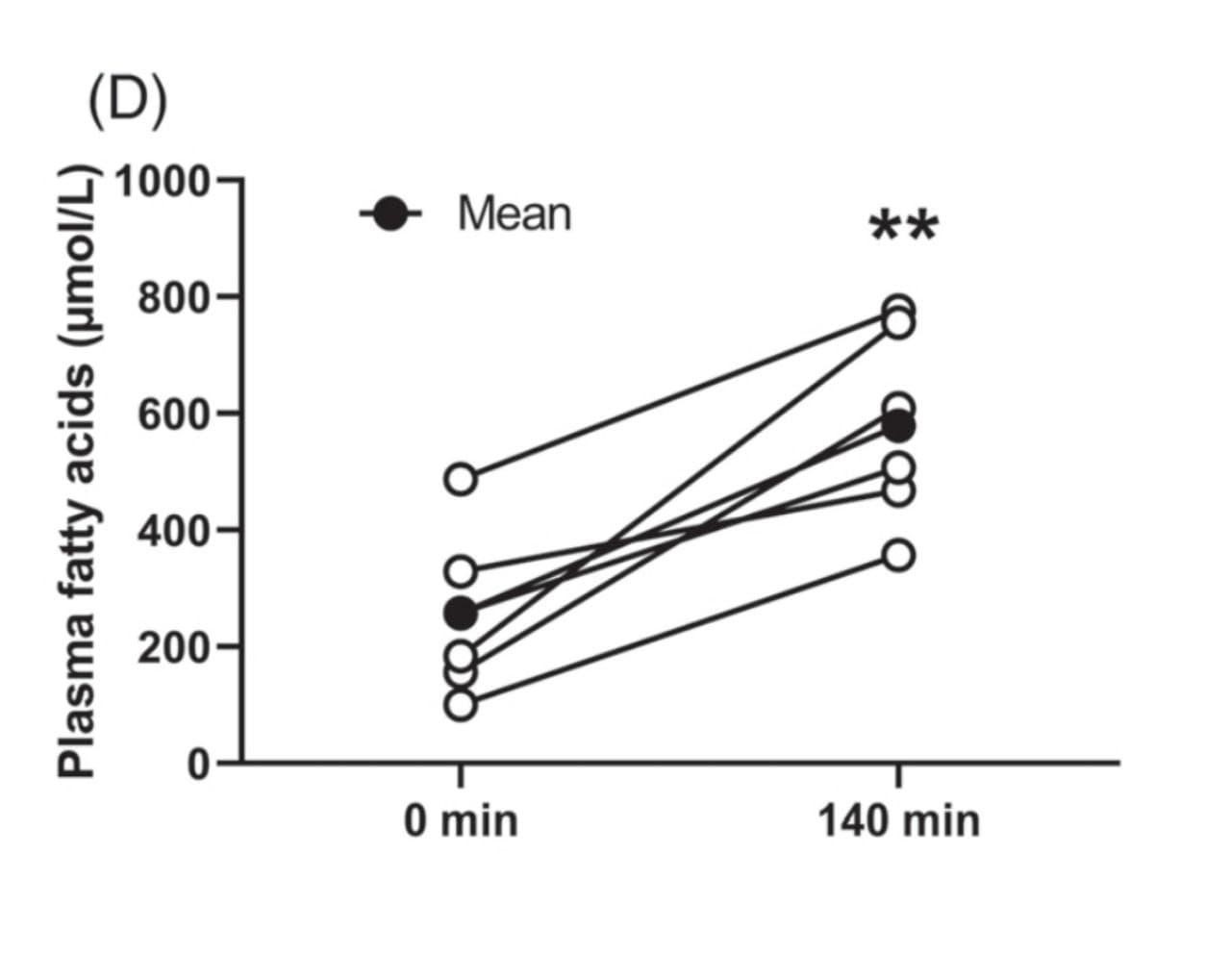
Regarding fatty acid oxidation, it can be elevated by up to 39%, even more so if a higher dose is tolerated. Therefore, managing side effects to tolerate a certain amount of the drug would be ideal from a practical standpoint.
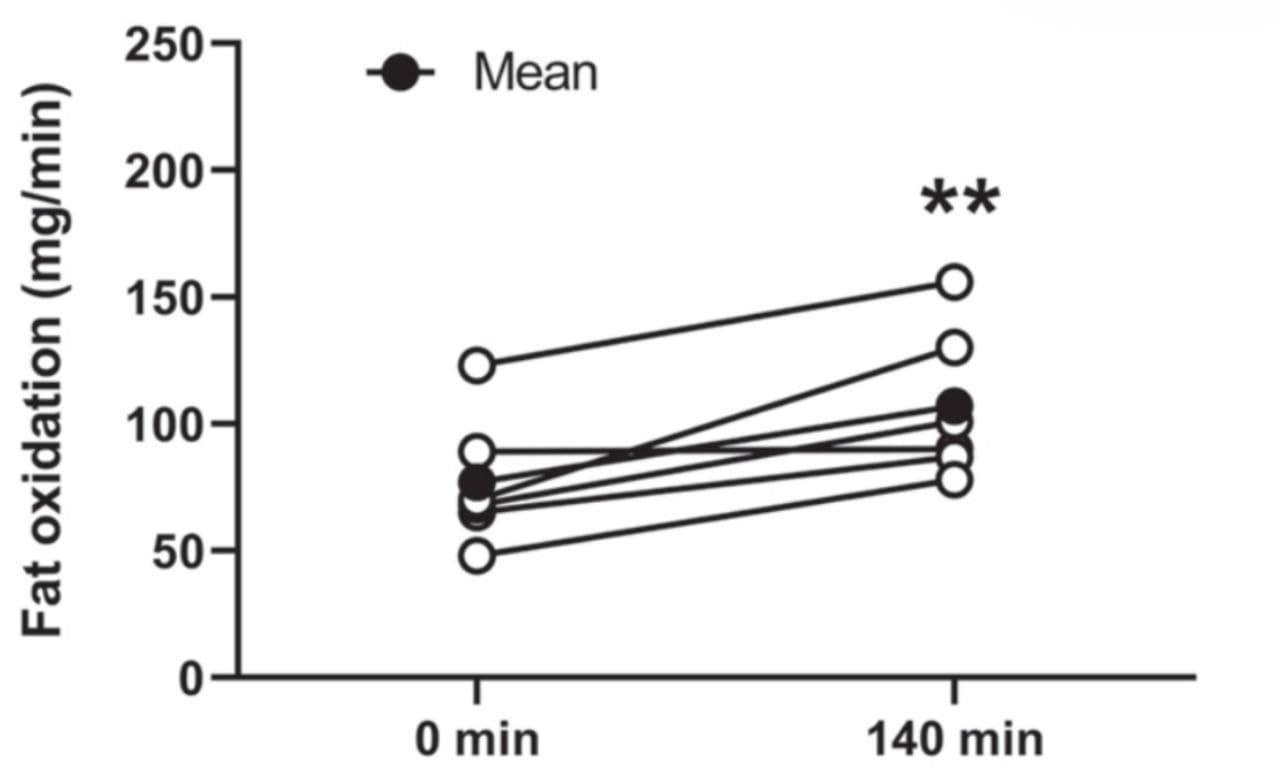
Although this is not a direct effect on fat loss, it indirectly contributes to it, especially in a calorie deficit scenario. Clenbuterol consumption significantly improves caloric partitioning.
This means that when a carbohydrate-rich meal is ingested, the glucose is more likely to go to glycogen formation (ideal for performance and fat loss) rather than being stored as fat.

Thus, clenbuterol is perhaps one of the most effective drugs for promoting fat loss, although some people may underestimate its effectiveness due to poor management of its side effects, which will be discussed below.
4. ADVERSE EFFECTS
Unfortunately, adrenergic receptor agonists are not selective, meaning they affect more cells and tissues, leading to most of the adverse effects.

These include increased heart rate, increased resting blood pressure, tremors, cramps, headaches, and even long-term cardiac tissue adaptation, which can trigger more undesirable effects.
As mentioned earlier, most of these effects are due to the non-selectivity of clenbuterol.
Another adverse effect of clenbuterol is the depletion of serum potassium stores, as clenbuterol drives potassium into the cells, making supplementation important to reduce risks to reduce possible cramps, which will be covered in the prophylaxis section.
5. IS IT ANABOLIC?
In absolute terms, it is anabolic. However, the studies showing significant anabolism are primarily in rodents.
What can we observe in humans? Clenbuterol does stimulate growth pathways such as mTOR and AKT-dependent protein synthesis.

But is this really significant?
Physiology is physiology, so it is anabolic in the strictest sense of the word, but it is not a compound with great growth potential. It can reduce muscle mass loss in a calorie-deficit scenario or perhaps even lead to slight muscle gains in someone new to substance use, provided appropriate training and rest conditions are met.
It should not be considered as a muscle mass gain agent. At most, it could be useful in a post-cycle therapy of anabolic steroids and/or SARMs.
6. PROPHYLAXIS
Prophylaxis involves interventions with supplements or drugs to reduce potential adverse effects, optimize usage, or increase tolerance to one or more substances.
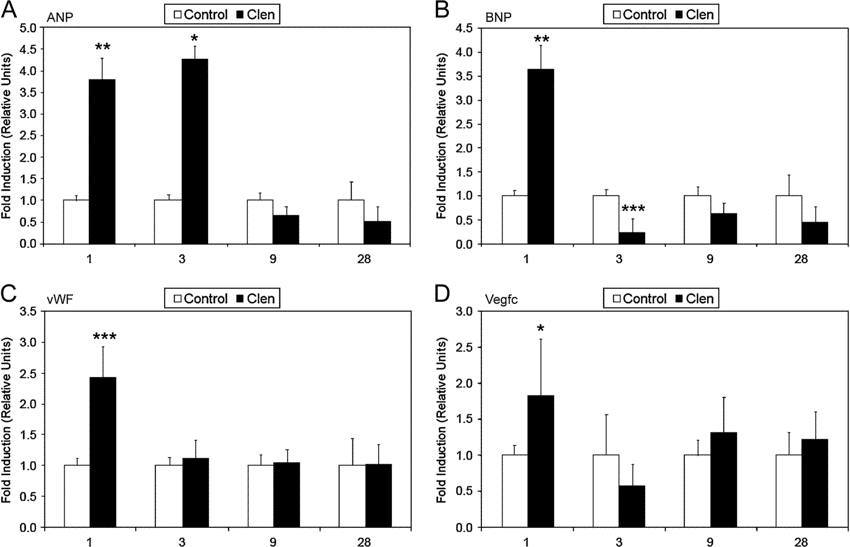
The first effect to address is the potential ventricular hypertrophy caused by Clenbuterol's interaction with adrenergic receptors. This interaction leads to changes in gene expression, stimulating mTOR (Mammalian Target of Rapamycin) and AKT (potentially anabolic signaling pathways), as well as increasing blood pressure. This occurs because Clenbuterol is not selective for skeletal muscle and fat tissue; it affects all tissues where B2 receptors are expressed.
What can we do?
Logically, adding a beta-blocker would be ideal to reduce the impact on the heart and lower blood pressure. However, there's another issue: If we completely block the beta receptors, Clenbuterol becomes ineffective. Therefore, the best option is a beta-blocker that is highly selective for cardiac tissue, such as Nebivolol.
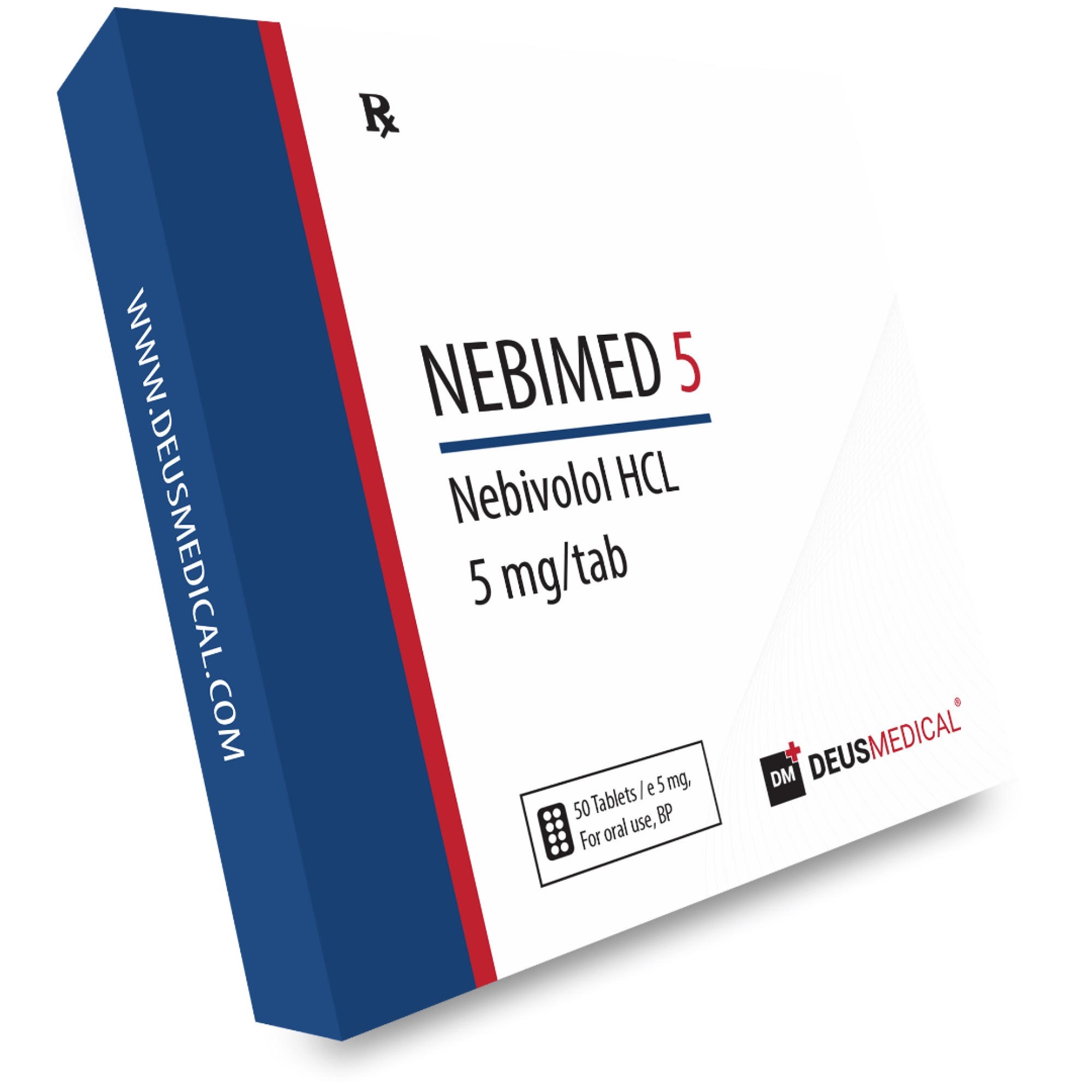
The dosage of this compound varies depending on the CYP2D6 genotype. For a normal metabolizer, the dose is 2.5 mg, and for a poor metabolizer, it's 1.25 mg.
How can I know if I’m a poor or normal metabolizer? You would need to test for the CYP2D6 genotype or start with the lowest dose and gradually increase it while monitoring tolerability and resting blood pressure, which should be checked at least 2-3 times per week.
The most bothersome and dangerous effect is the mineral imbalance since the use of this drug causes depletion of potassium stores, as Clenbuterol drives potassium into the cells, leading to nervous and cardiac issues. Therefore, supplementing with potassium, sodium, magnesium, and plenty of water is crucial to maintain hydration.
The final adverse effect that can be addressed is receptor adaptation, which occurs after a few weeks of using Clenbuterol. This doesn't need to be addressed if breaks are taken, but if you want to prolong the use, it should be considered.
7. PROTOCOLS
For a protocol to be effective, it must combine all the aforementioned factors with the correct dosing and timing.
In this protocol, the guidelines are followed for two weeks, then stopped for two weeks, and repeated if desired.
PROTOCOL 1: 2 WEEKS ON/OFF
SUBSTANCE DOSAGE ADMINISTRATION
Clenbuterol 40-160 mcg Fasted/Morning
Nebivolol 1,25-2,5mg Fasted/Morning
Potassium 1000mg Fasted/Morning
Magnessium 500mg-1gr Fasted/Morning
Taurine 1gr Fasted/Morning
The specified Clenbuterol dose is for men, ranging from 40 mcg to 120-160 mcg, as each person’s tolerance varies. The higher the dose tolerated, the greater the effect on basal metabolic rate, fatty acid mobilization, and oxidation. For women, the starting dose is 20 mcg.
-Should I start with 20-40 mcg or go straight to 120-160 mcg? The response is individual, so to better assess tolerance, start with the minimum dose and increase by 20 mcg every 5-7 days, then reassess the tolerance to adverse effects.
-Nebivolol dosing follows a similar principle, with higher tolerated doses providing a greater therapeutic effect. I recommend checking blood pressure 2-3 times a week.
-Potassium: If consuming a lot of fruits and vegetables, the potassium supplementation (potassium citrate) will need to be lower. Below is a table showing the potassium content per 100g of product. Additional potassium should be supplemented as needed.
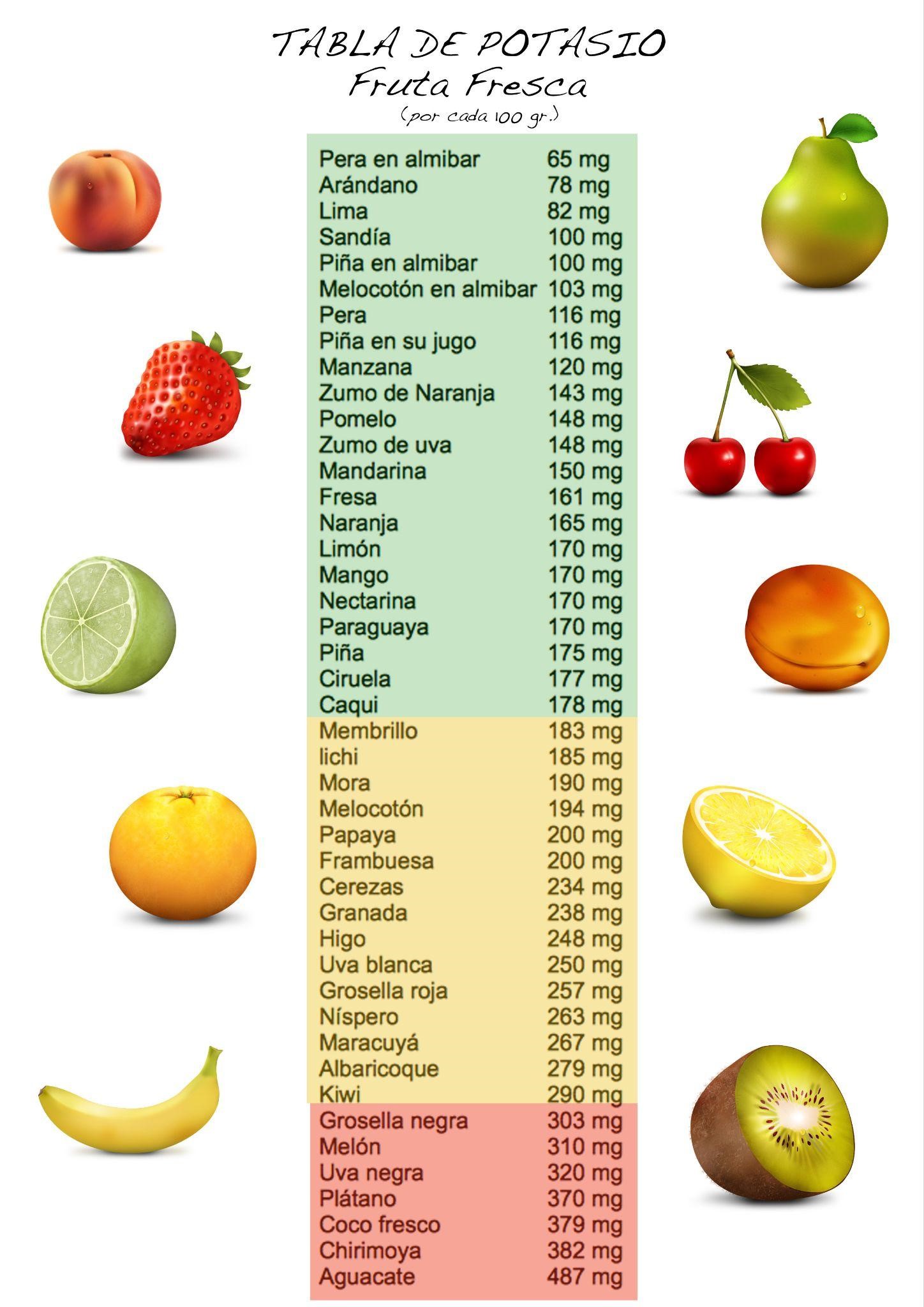
-Magnesium: Use Magnesium Carbonate or Bisglycinate, as these have the best bioavailability among magnesium salts (Carbonate is very affordable).
-If experiencing severe cramps and muscle spasms, supplementing with Taurine at 1-3 g may help, splitting the dose between Clenbuterol and before bed.
-Clenbuterol should not be used chronically but can be extended for a few more weeks without needing to discontinue.
PROTOCOL 2: CONTINUOUS
SUBSTANCE DOSAGE ADMINISTRATION
Clenbuterol 40-160 mcg Fasted/Morning
Nebivolol 1,25-2,5mg Fasted/Morning
Potassium 1000mg Fasted/Morning
Magnessium 500mg-1gr Fasted/Morning
Taurine 1gr Fasted/Morning
Ketotifen 2mg During 1 week, each 3 weeks with Clenbuterol, before to sleep
-Ketotifen: Ideally, use it for 7 days for every 3 weeks of Clenbuterol. Do not stop Clenbuterol during this time; simply discontinue Ketotifen after the week. Drowsiness is common since it's an antihistamine, but you can manage this with moderate caffeine use.
8.TO CONCLUDE
This compound is very useful and has been misused for many years.
It’s particularly valuable in phases where most body fat is lost, such as when targeting the removal of most fatty tissue. It’s also highly effective during a "minicut," where the goal is to lose as much fat as possible in a short time frame.
It's worth noting that it can be used in a calorie surplus to maintain an elevated metabolism, optimize nutrient partitioning, and reduce the likelihood of accumulating fat.
If you ask when to use it during a bulking phase, I would suggest at the beginning, immediately after the cutting phase (with Clenbuterol), and continue its use to handle more calories without gaining fat.
Clenbuterol is a powerful compound for promoting the three key aspects of fat loss: metabolic rate, lipolysis, and beta-oxidation.
In performance sports like CrossFit, weightlifting, swimming, marathon running, and contact sports, it is widely used as a doping agent and is a significant aid.
Of course, it is not something to be taken lightly, and if you decide to use it, it is a personal choice. I refer you to the warning on the first page.
If you have any questions, feel free to write to the support email, and we will consider suggestions for future articles.
Nutribuilder
Julio Vizuete Velasco

